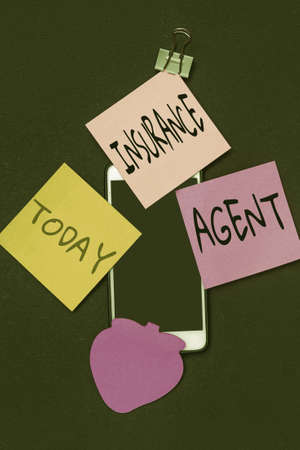Understanding Professional Liability Insurance
If you run a business or provide professional services in the United States, you’ve probably heard about professional liability insurance. But what exactly is it, who needs it, and why is it so important? Let’s break down the basics so you can understand why this type of coverage matters for professionals and companies alike.
What Is Professional Liability Insurance?
Professional liability insurance—sometimes called errors and omissions (E&O) insurance—protects professionals and businesses against claims of negligence, mistakes, or failure to perform their professional duties. If a client believes you made an error that caused them financial harm, this insurance can help cover the legal costs and potential settlements.
Who Needs Professional Liability Insurance?
This coverage isn’t just for doctors or lawyers—it’s essential for many types of professionals. Here’s a quick overview:
| Profession/Business Type | Why Its Needed |
|---|---|
| Doctors & Healthcare Providers | Protection from malpractice claims |
| Lawyers & Legal Consultants | Covers legal errors or omissions |
| Accountants & Financial Advisors | Safeguards against financial advice mistakes |
| IT Professionals & Tech Consultants | Covers software errors, data loss, or system failures |
| Architects & Engineers | Protects from design flaws or project oversights |
| Real Estate Agents & Brokers | Covers disclosure issues or contract mistakes |
| Consultants & Business Coaches | Helps with claims related to advice or guidance given to clients |
Why Is It Essential in the U.S.?
Lawsuits are common in the U.S., and even a small mistake can lead to big legal bills. Without professional liability insurance, businesses and individuals could face huge out-of-pocket costs if they’re sued. This coverage helps protect your reputation, your finances, and your ability to keep working if something goes wrong.
2. Key Coverage Areas of Professional Liability Insurance
Professional liability insurance, also known as errors and omissions (E&O) insurance, is designed to protect professionals from risks that are unique to their field. In the United States, this type of insurance is a must-have for many service-based professions like doctors, lawyers, consultants, architects, and more. Let’s break down the main areas that are typically covered under a professional liability policy.
Main Risks Covered by Professional Liability Insurance
The core purpose of professional liability insurance is to cover claims arising from mistakes or failures in providing professional services. Here are some key coverage areas:
| Coverage Area | What It Means |
|---|---|
| Negligence | If you make a mistake or overlook something important in your work that causes financial harm to a client, your policy can help cover the damages. |
| Errors or Omissions | This covers situations where you fail to perform a specific duty or make an error that leads to a client’s loss. |
| Misrepresentation | If a client claims you gave them false information—intentionally or not—and they suffer because of it, this coverage can step in. |
| Legal Defense Costs | Your policy can pay for attorney fees, court costs, and other legal expenses—even if you’re not found liable in the end. |
| Breach of Duty | Covers claims that you didn’t fulfill the responsibilities expected in your role as a professional. |
How Does Coverage Work in Real Life?
Imagine you’re an accountant who accidentally files incorrect tax paperwork for a client. If the client is fined by the IRS and decides to sue you for damages, your professional liability insurance can help cover both the legal defense costs and any settlement or judgment (up to your policy limits).
Who Needs This Coverage?
Almost any business or individual providing expert advice or services should consider professional liability insurance. In fact, some clients may require proof of this coverage before hiring you for a project.
![]()
3. Common Exclusions in Professional Liability Policies
While professional liability insurance—sometimes called errors and omissions (E&O) insurance—can offer important protection for professionals, its just as important to know what it does not cover. Understanding these common exclusions can help you avoid surprises if a claim arises.
What Is Usually Not Covered?
Professional liability policies typically have a list of exclusions that spell out exactly what types of incidents are not covered. Here are some of the most common exclusions:
| Exclusion | What It Means |
|---|---|
| Intentional Wrongdoing or Fraud | If you knowingly commit a wrongful act or fraud, your policy won’t cover any claims resulting from those actions. |
| Bodily Injury or Property Damage | Most professional liability policies do not cover physical injury to a person or damage to property. These are usually covered under general liability insurance instead. |
| Contractual Liabilities | If you agree to certain liabilities in a contract (that you wouldn’t otherwise have under the law), your policy likely will not cover those. |
| Employment-Related Claims | Claims related to employment practices like wrongful termination, discrimination, or harassment are generally excluded. These require a separate Employment Practices Liability Insurance (EPLI) policy. |
| Punitive Damages | Punitive damages, meant to punish rather than compensate, are often excluded by insurers. |
| Prior Acts and Known Claims | If you knew about a potential claim before buying your policy, it likely won’t be covered. |
| War and Terrorism | Losses resulting from war, terrorism, or similar events are commonly excluded from coverage. |
Why Do These Exclusions Exist?
The main goal of professional liability insurance is to protect you from mistakes or negligence that happen as part of your professional services. Insurance companies exclude certain situations to keep premiums affordable and make sure coverage stays focused on unintentional errors, not on risks that can be better managed elsewhere or avoided entirely through ethical behavior.
4. Real-World Scenarios: How Coverage Works in Practice
Understanding Professional Liability Insurance Through Everyday Examples
Professional liability insurance, also known as errors and omissions (E&O) insurance, is designed to protect professionals when things dont go as planned. To better understand what this coverage really means for American businesses, lets look at some real-life scenarios where professional liability insurance plays a key role.
Common Scenarios Where Claims Happen
| Profession | Scenario | How Coverage Responds |
|---|---|---|
| Consultant | A business consultant provides advice that results in financial loss for a client. | The policy helps cover legal defense costs and settlements if the client sues for negligence or poor advice. |
| Architect | An architect makes a design error that leads to costly construction delays. | Insurance can pay for legal fees and damage awards related to the mistake. |
| IT Specialist | An IT firm fails to properly secure a clients data, leading to a breach. | The insurer may cover the cost of defending against lawsuits and any settlements due to alleged negligence. |
| Real Estate Agent | A buyer claims they were misled about property details, resulting in a lawsuit. | The policy may pay for attorney fees and damages if the agent is found liable for misinformation. |
| Accountant | An accountant makes an error on a client’s tax return, resulting in penalties from the IRS. | The insurance can help cover costs related to defending against the claim and any awarded damages. |
Key Features Highlighted by These Scenarios
- Covers Legal Costs: No matter who is at fault, legal defense can be expensive. Professional liability insurance steps in to help with those costs.
- Covers Settlements & Judgments: If you’re found liable or decide to settle out of court, your policy may cover these expenses up to your policy limits.
- Applies Even if Allegations Are Unfounded: Sometimes clients sue even when you’ve done nothing wrong. The insurance helps defend you in these cases as well.
- Customizable Coverage: Policies can be tailored based on industry risks and the specific services your business provides.
A Closer Look: Claim Example from an American Law Firm
An attorney represents a client in a contract dispute. After losing the case, the client sues the attorney, claiming they gave incorrect legal advice. The attorney’s professional liability insurance pays for legal defense and helps settle the claim outside of court, saving the firm thousands of dollars that would have come directly out of pocket.
5. Choosing the Right Policy and Additional Considerations
How to Evaluate Professional Liability Insurance Policies
Selecting the right professional liability insurance policy is essential to protect your career and business. Here’s what you should look for when comparing different options:
| Factor | Why It Matters |
|---|---|
| Coverage Limits | Higher limits offer more protection, especially if you face expensive lawsuits. |
| Deductibles | The amount you pay out-of-pocket per claim can affect your overall costs. |
| Covered Services | Make sure your specific professional activities are included in the policy. |
| Exclusions | Understand what is not covered so there are no surprises later. |
| Claims-Made vs. Occurrence | Know whether the policy covers incidents based on when they happened or when they’re reported. |
| Defense Costs | Check if legal defense costs are included within the coverage limit or paid in addition. |
| Retroactive Date | This determines how far back in time your coverage applies. |
| Tail Coverage Option | Covers claims made after your policy ends, which is important if you change jobs or retire. |
Important Factors to Consider Before Buying a Policy
- Your Profession’s Risk Level: Some professions face higher risks of lawsuits than others. For example, healthcare providers and consultants may need broader coverage than other professionals.
- State Requirements: Certain states require minimum coverage amounts or specific endorsements for certain professions. Be sure your policy meets local regulations.
- Your Client Contracts: Many clients expect you to carry professional liability insurance and may require specific coverage amounts in contracts.
- Your Business Size and Structure: The number of employees, annual revenue, and type of work you do can influence the right policy for you.
- Reputation and Financial Stability of Insurer: Choose an insurance company with strong financial ratings and good customer service reviews.
Tips for Ensuring Adequate Protection
- Review Your Policy Annually: As your business grows or changes, so do your risks. Make sure your coverage keeps up.
- Ask About Customization: Many insurers allow you to tailor policies with endorsements that fit your profession’s unique needs.
- Consult an Independent Agent: An experienced agent can help compare policies from multiple insurers to find the best fit for you.
- Keep Documentation: Maintain detailed records of client agreements, communications, and work performed in case you need to defend yourself against a claim.
- Avoid Gaps in Coverage: Never let your policy lapse, as this could leave you exposed to claims from previous work.
The Bottom Line: Matching Coverage to Your Needs
No two professionals have exactly the same insurance needs. Take time to understand what each policy offers and make sure it aligns with your profession’s requirements, state laws, and client expectations. A carefully chosen professional liability insurance policy offers peace of mind and vital protection for your reputation and livelihood.


